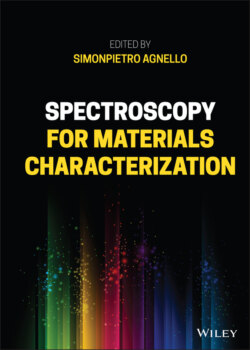Читать книгу Spectroscopy for Materials Characterization - Группа авторов - Страница 34
2.1 Introduction to Photoluminescence Spectroscopy
ОглавлениеLuminescence is a paramount property for several optical applications including lighting, laser sources, detectors, and, recently, modern nanotechnologies (bioimaging, optoelectronics). To this aim, the research is currently active toward the development of production methods successful to finely control the physical and chemical characteristics of materials, thus tailoring their emission. This challenge strongly stimulates the luminescence spectroscopy to be more and more performing by new solutions that improve the efficiency of excitation sources and detectors used in the experimental setup. A crucial part for the study of luminescence properties is covered by the time‐resolved technique that allows to characterize in detail the properties of excited state from which the photon emission originates. Time‐resolved luminescence provides indeed the measure of spectroscopic parameters (lifetime, quantum yield, oscillator strength, and electron–phonon coupling) useful to fully describe the optical cycle excitation/emission.
The purpose of this chapter is to provide a theoretical background of the luminescence properties related to color centers in wide band‐gap insulators. This is a very important issue that has been dealt with in several textbooks (see, for example, Refs. [1–7]). In particular, we will focus on specific features arising from the electron–phonon coupling (Zero‐Phonon Line and vibrational sidebands), which are fundamental for the interpretation of luminescence experiments in solids.
